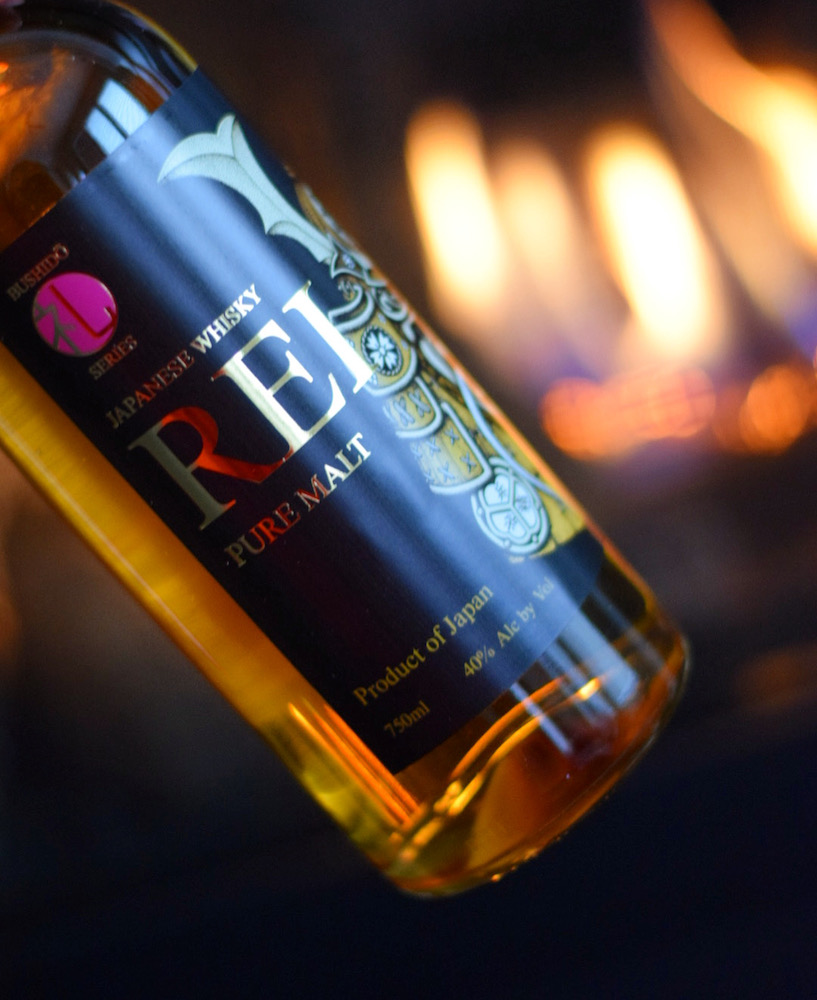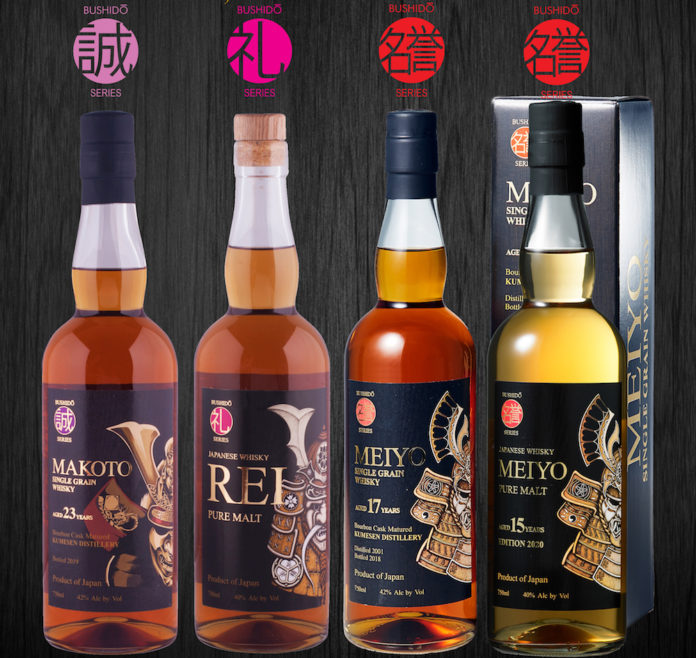Bushido Whisky is a newer brand of Japanese whisky that received positive marks in Jim Murray’s “Whiskey Bible 2020.” Murray gave the brand’s 17-year-old expression a high grade of 94.5. What differentiates this collection of four expressions is a focus on older age statements. The current lineup includes 15-, 17-, and 23-year-old expressions.
For a deeper dive into this emerging brand in a red-hot category, we recently caught up with Andrew Koz, who handles marketing and social media for Bushido Whisky and its parent company, Aiko Importers Inc.
Beverage Dynamics: Why does Japanese whisky remain so hot?
Andrew Koz: Simply because of demand, and the supply hasn’t caught up. In the past 10 years the Japanese whisky category exploded in demand. The category was moving slowly at first and then one of the whiskies got named best whisky in the world. Then the whole category got popular and the supply has disappeared.
Now, if you don’t use the secondary market, it’s hard to find these products. But our products fill in that need, and meet the demand.
The cool part about Japanese whisky is that when the industry started up more than 100 years ago, they began by creating products similar to Scotch. The whiskies were peated and rough. The distillers brought these products out to the Japanese public, but the whiskies received zero interest. So the distilleries reworked the formulas for whiskies that were smoother and fruitier. That’s where the category’s signature tropical fruits and citrus notes come from. The Japanese brought out an entirely new category of whiskey and really solidified their own palate.
Their flavors are rich, and their story is rich. And now the demand for Japanese whisky is super high, which has made the demand snowball even more.
BD: Where is your whisky from?

AK: We work with Kumesen Distillery in Okinawa. They’re on the southern tip of the Japanese islands. They had never created products before for the U.S. market. We bought barrels from them and brought them back to the U.S. We launched the brand about 20 months ago. We’re distributed across about 600 accounts in 37 states, mostly in liquor stores, Wholefoods, Costco and high-end Japanese restaurants.
Our products are single grain. That’s special to Kumesen Distillery, because they have an Indica rice that’s unique to them that they use to make their whisky. That’s adding innovation to the category, because we hadn’t yet seen an extremely aged single-grain Japanese whisky. It’s caught the attention of connoisseurs. It’s so different but tastes very good. We’re filling in a need by bringing back more age statements and innovating in a category that hasn’t had as much innovation yet. Chita from Suntory has a single grain, but it’s not nearly as old as ours.
BD: How does single grain taste?
AK: It has more of that Japanese tropical fruit profile. Coconuts and other tropical notes come from the ingredients we use from our Japanese island. The bourbon barrel aging aging brings out the wooded bourbon cask flavors. In Jim Murray’s “2020 Whiskey Bible” he notes that our 17-year-old has hints of cherry blossom, with an initial cask fog that clears away for the citrus note.
BD: Why use bourbon casks?
AK: We wanted to create the best products and we think that ex-bourbon casks create the best whiskies. Now we’re also working with Mizunara oak for a future series. We’re calling our lineup the 7 Virtues, and so far we’ve only released three. The next four will all come out with different casks.
We’re also working on bringing out a 30-year-old age-statement Japanese whisky, probably around the next holiday season.
BD: Why the emphasis on age statements?
AK: We’re filling in a need by bringing back age statements. They’re extremely hard to make because you can’t simply make a blend that achieves the flavor results that you want. But there’s something special about the process of barrel-aging taking place over time to create a flavor profile that you can’t get from anything else. There are certain things that blends cannot achieve without being heavily aged.
This interview was edited and condensed for publication.
Kyle Swartz is editor of Beverage Dynamics magazine. Reach him at kswartz@epgmediallc.com or on Twitter @kswartzz. Read his recent piece How Can Craft Distilling Survive The Coronavirus?




